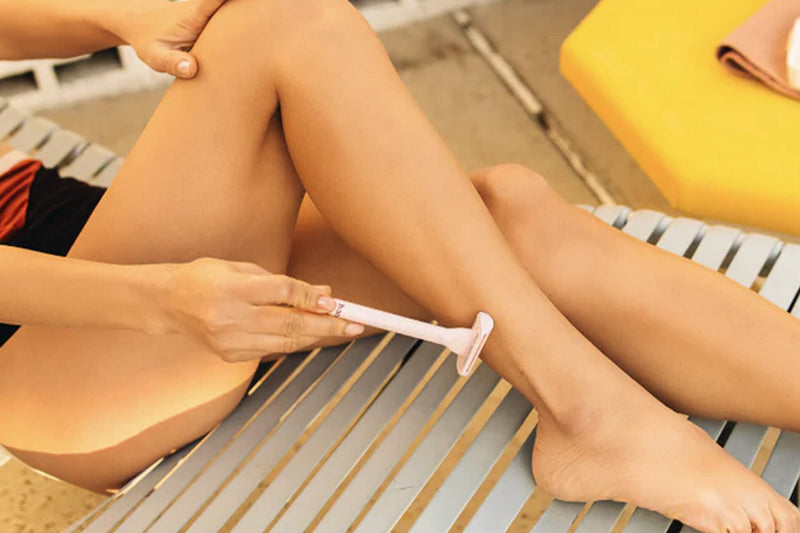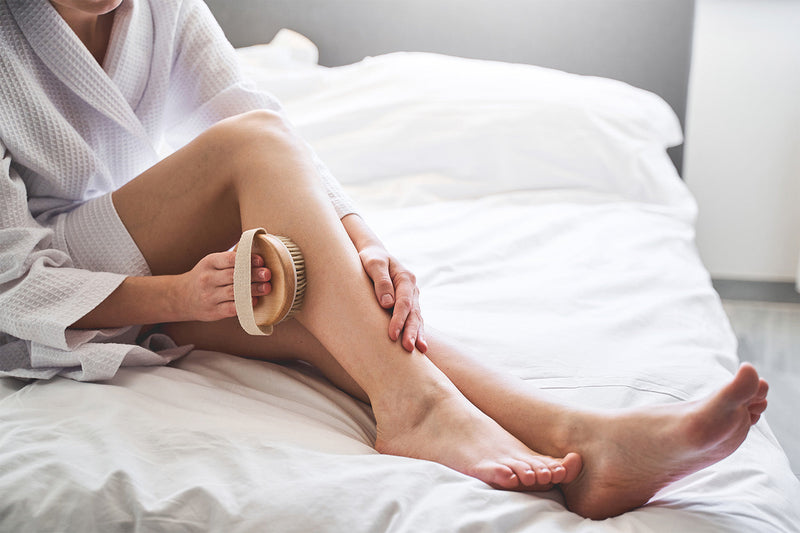Razor burn can feel like a dirty secret. Rashes under your arms or on your bikini line have the strange power to transport us back to our middle school years, bringing with it all the self-doubt and worry that plagued most of our preteen years. Thankfully, razor burn isn’t the end of the world, even if you have sensitive skin.
Whether we’re twelve or twenty, razor burn happens to all of us. But that doesn’t mean we shouldn’t try to avoid it – or treat it when it pops up.
But before you can work to get rid of razor burn, you first have to understand what it is.
What is razor burn?
Razor burn — sometimes called razor rash — is a cosmetic skin condition that occurs after shaving. Manifesting as patches of irritated skin, razor burn can develop within minutes of shaving, though it most commonly arrives a few hours or days after you put down your razor.
Some people will claim that razor burn is most commonly experienced by men who shave their faces, but that’s just not true. Anyone who shaves can experience razor burn. The condition can develop on any skin you choose to shave, including your legs, underarms, and even pubic area.
Symptoms of razor burn are usually sensory at first. Characterized by itchiness and burning sensation, razor burn is an uncomfortable condition. Over the next few days, some swelling may occur, but the most common effects will be general irritation and redness.
As the hair begins to grow back, visual indicators will join the list of symptoms, appearing as small clusters of dark red bumps surrounding the budding hair follicles.
How is razor burn different from razor bumps?
Though razor burn and razor bumps are caused by the same things, the skin conditions are not identical. While razor burn describes the initial redness and irritation experienced following shaving, while razor bumps occur as the shaved hair begins to grow back.
Razor bumps, which your dermatologist might call Pseudofolliculitis Barbae, are an inflammatory skin condition caused by hair removal methods, shaving being among the top contributors. The result of irritated hair follicles, razor bumps develop when hair grows in a downward direction. Similar to ingrown hairs, these bumps can become inflamed as your hair becomes trapped under the skin’s surface.
To understand the difference between razor burn and razor bumps, it’s easiest to think of the two conditions as a cause-and-effect relationship. Razor burn causes razor bumps, and razor bumps are the effect of razor burn. Though they are connection conditions, razor burn and razor bumps are separate skin problems with independent symptoms.
However, the causes of these skin conditions are less distinct.
What causes razor burn?
One of the most common skin conditions in the united states, razor burn has a list of causes a mile long. From specific products known to encourage irritated skin to general practices that more or less promote ingrown hairs, it can be hard to narrow down the exact cause of your specific case of razor burn.
But, no matter the specifics, razor burn is always the result of a razor. When looking for the cause of your case, look to the habits of your shaving routine.
Using the wrong razor
Not all razors are made the same, so not all razors will shave the same. When you use a razor blade that is rusted or dull, you invite irritation to your skin. Multi-blade cartridge razors that fail after just one use cannot compare to the strength of a sharp razor. For a safe yet smooth shave, ditch the single-use plastic and invest in a better razor.
Here at Hanni. Our plastic-free Weighted Razor Is made with only the best materials to give you a better shave. With an ergonomic metal body and rust-free blades, this razor won’t leave anything behind – and that goes for razor burn as well as hair.
Dry shaving
But using the wrong shaving tools isn’t the only mistake you can make when it comes to shaving. No matter your skin type, dry shaving is a death sentence for anyone who dares to take the risk.
If you learn anything today, it should be to never Ever Shave your skin while it’s dry. There’s a reason most people shave in the shower: the heat from the warm water relaxes your pores, opening your hair follicles so that you might safely remove hair from your body. If you forgo that heat (and the lubrication the water provides), your tight skin will try to hold on to its hair, and your razor will be met with friction.
To prevent this problem before it can occur, always shave using shaving cream or a moisturizer of some kind.
How do you prevent razor burn?
Unfortunately, razor burn as a skin condition cannot be cured. But that doesn't mean you are without options. The best way to get rid of razor burn (and to get rid of razor bumps along with it) is to target each symptom one by one.
Soothing itching
Often the first symptom to arrive and by far the most irritating, itchiness is one of the most persistent effects of razor burn. Like a mosquito bite that just won’t go away, the persistent itch of razor burn is annoying, to say the least. But thankfully, there are plenty of over-the-counter products to help with that.
Constantly scratching at your skin will only make your razor burn (and its itch) worse. To soothe your skin and stop the itching, boost your post-shave routing by applying tea tree oil, hydrocortisone cream, or an aloe vera cream to the affected area.
Thanks to their all-natural and skin-safe ingredients, you can apply these skincare products as much as needed to relieve your skin.
Stopping dryness
If specialized treatments fail to subdue razor burn’s powerful itch, supplement your home remedies with additional hydration.
Because razor burn is caused by excessively dry patches of skin, it only makes sense that the natural cure would be to moisturize your skin. As a part of your daily skincare routine, hydrate your irritated skin with something designed to nourish, like our Shave pillow. It’s mess-free hydration that can go with you wherever you roam, so dry skin can never sneak up on you.
Reducing inflammation
But sensory symptoms are the only side effects of razor burn. In addition to the itching and burning of the skin condition, you can also experience skin swelling and inflammation. To get rid of razor burn completely, your treatment plan should target these symptoms too.
When looking to reduce inflammation, look for skincare products that include anti-inflammatory and antioxidant ingredients. Astringent products like witch hazel are great for calming angry skin cells, and emollients are known for their potential to prevent inflamed and irritated skin as well.
Think about your skin type
Remember, as you select the right treatment method for you, keep in mind your skin type. Just because a certain shaving product works for your best friend doesn’t mean it will work for you. To get rid of razor burn or, better yet, prevent the bumps before they can form, it’s important to choose the right shaving products for you.
Shaving with dry skin
If you have dry skin and often notice a buildup of dead skin cells in the areas you shave, you should put hydration at the front of your shaving routine. In addition to a daily lotion, start your shave with a moisturizing shaving cream, gel, or our specially-formulated Shave Pillow.
While some praise home remedies like coconut oil or colloidal oatmeal baths, any otc shaving gel will do. Do long as your moisturizer nourishes your naturally dry skin, do whatever feels best for your skin.
The shave pillow can be used in or out of the shower so that you never have to experience the dreaded dry shave.
Shaving with oily skin
Shaving with oily skin is an entirely different situation. Though consistent hydration is important for any skin type, it’s not the number one priority for people with oily skin. If you struggle with excess oil across your body, cleaning your skin of buildup is the first step to a successful shaving routine.
The easiest and most effective way to remove unwanted oils from your skin is by investing in a good cleanser. Look for skincare products with powerful exfoliating ingredients like glycolic acid, which can reduce excess oil production and prevent acne. And with less acne comes fewer razor bumps.
Beauty isn’t skin deep
There is no one definition of beauty. Whether your skin is covered in freckles or scars or razor bumps, we are all beautiful in our own way. As cliche as it sounds, beauty really is in the eye of the beholder. And here at Hanni, we believe you are the only beholder who matters.
Sources:






